Best Kitesurfing Spots in Greece
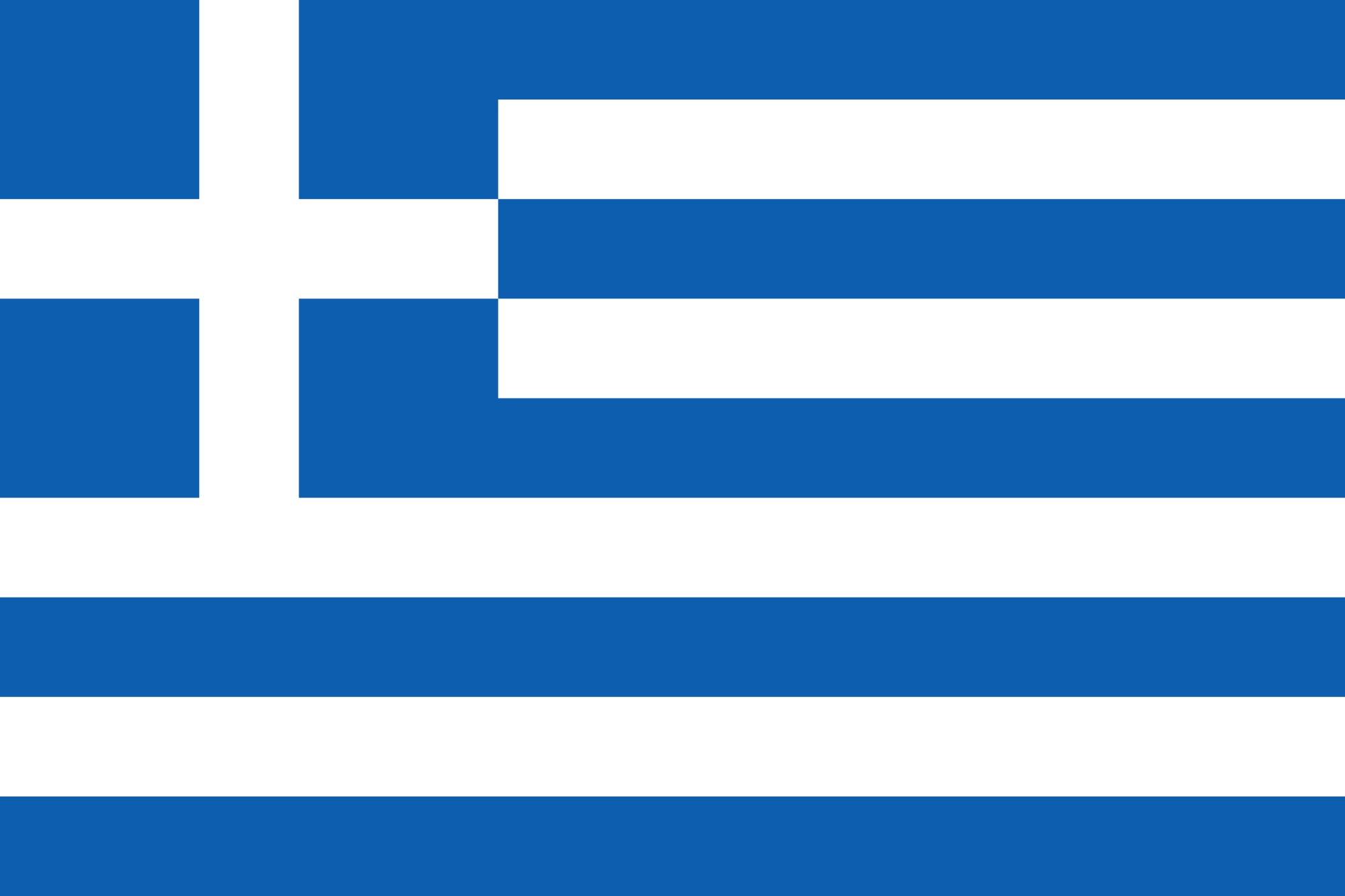
Greece, renowned for its diverse kitesurfing spots, offers a haven for enthusiasts seeking optimal wind conditions and stunning coastal backdrops. From the famed shores of Lefkada to the windy expanses of Rhodes, the country’s kitesurfing destinations cater to a range of skill levels.
Naxos, Paros, Karpathos, Kos, and Lemnos (Limnos) each bring a unique charm, promising kitesurfers an unforgettable experience. As the discussion unfolds, we will explore the distinctive features that make these Greek islands stand out as premier kitesurfing spots, blending adrenaline-pumping adventures with the allure of the Mediterranean.
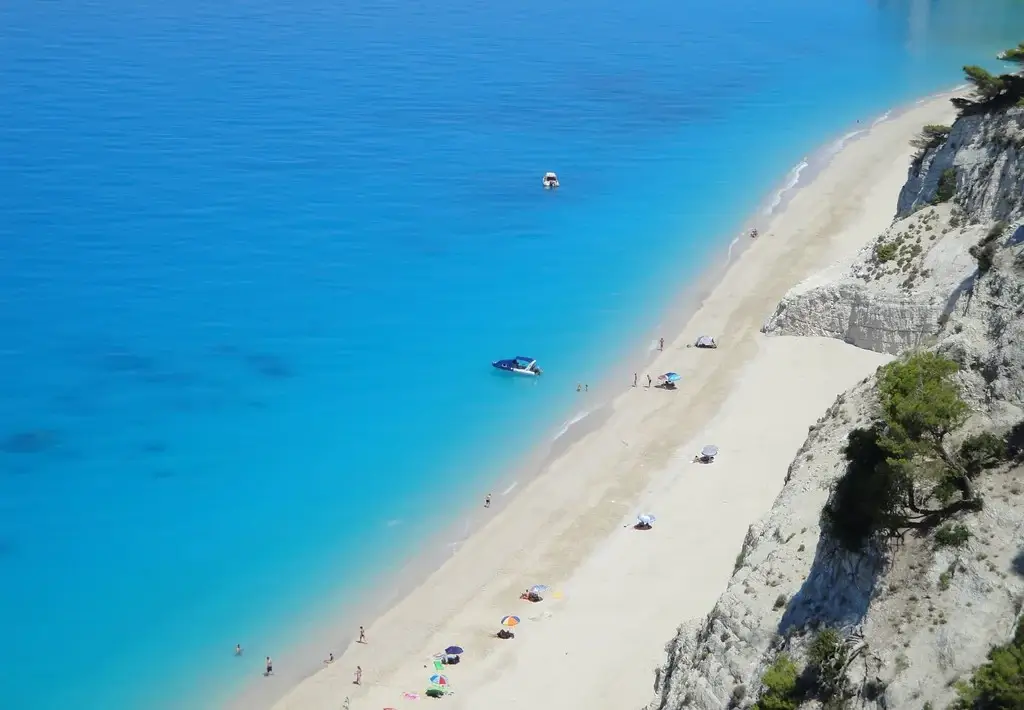
Lefkada
Lefkada is renowned for its excellent wind conditions, making it a prime destination for kitesurfing enthusiasts seeking thrilling sessions on the water.
The island’s crystal-clear waters and consistent breezes create an ideal playground for riders of all levels, from beginners to experts.
Kitesurfers flock to Lefkada to experience the perfect combination of wind and waves, promising an unforgettable kitesurfing adventure.
Wind conditions
Lefkada, located in the Ionian Sea, is renowned for its favorable wind conditions, making it a popular destination for wind-based water sports such as windsurfing and kitesurfing. While specific wind conditions can vary throughout the year, the island generally experiences consistent wind patterns that attract enthusiasts from around the world.
Here’s a general overview of the yearly average wind conditions at Lefkada:
Spring (March to May):
- During spring, Lefkada typically experiences moderate to strong winds, with average speeds ranging from 10 to 20 knots.
- The prevailing winds during this season are often from the northwest or west, providing excellent conditions for wind sports enthusiasts.
Summer (June to August):
- Summer brings relatively lighter winds to Lefkada compared to other seasons, with average speeds ranging from 5 to 15 knots.
- While the winds may be lighter, they are still consistent enough to support windsurfing and kitesurfing activities, particularly in the afternoons when thermal winds pick up.
Autumn (September to November):
- Autumn marks the return of stronger winds to Lefkada, with average speeds ranging from 10 to 25 knots.
- The prevailing winds shift to the southeast or south, providing ideal conditions for wind sports enthusiasts to enjoy challenging yet thrilling sessions on the water.
Winter (December to February):
- Winter months at Lefkada can experience variable wind conditions, with average speeds ranging from 5 to 20 knots.
- While winter may bring occasional lulls in wind activity, there are still opportunities for wind sports enthusiasts to enjoy sessions on the water, particularly during periods of strong frontal systems.
It’s important to note that these are general trends, and actual wind conditions can vary based on weather patterns, local geography, and other factors.
Water conditions
When considering water conditions for kitesurfing in Lefkada, Greece, several factors come into play, including water temperature, tides, and currents. Here’s a breakdown of these elements:
Water Temperature:
- The water temperature in Lefkada varies throughout the year, with warmer temperatures typically occurring during the summer months and cooler temperatures during the winter.
- During the peak kitesurfing season from late spring to early autumn, water temperatures range from around 20 to 25 degrees Celsius (68 to 77 degrees Fahrenheit), providing comfortable conditions for kitesurfers.
- In the winter months, water temperatures may drop to around 15 degrees Celsius (59 degrees Fahrenheit) or lower, requiring kitesurfers to wear thicker wetsuits or drysuits to stay warm.
Tides:
- Lefkada experiences semi-diurnal tides, meaning there are typically two high tides and two low tides each day.
- The tidal range in Lefkada is relatively small compared to other regions, averaging around 0.5 to 1 meter (1.6 to 3.3 feet).
- While tidal currents may not be as pronounced in Lefkada compared to other coastal areas, kitesurfers should still be aware of tidal changes, especially when launching and landing their kites.
Wave Conditions:
- Lefkada offers a variety of wave conditions suitable for kitesurfing, ranging from flatwater lagoons to choppy waves and even occasional surf breaks along the coastline.
- The wave conditions can vary depending on factors such as wind direction, swell size, and geographical features of the coastline.
- Beginners may prefer kiting in flatwater areas or shallow bays with smoother conditions, while more experienced riders may seek out waves for wave riding or freestyle tricks.
Overall, Lefkada provides favorable water conditions for kitesurfing, with warm temperatures, reliable winds, and diverse wave options to suit all skill levels.

Rhodes
Rhodes, the Greek island in the southeastern Aegean Sea, is a kitesurfing paradise known for its ideal wind conditions. With consistent winds that vary in strength throughout the day, kitesurfers can enjoy thrilling sessions in the crystal-clear waters surrounding the island.
The combination of steady winds and flat water areas makes Rhodes a must-visit destination for kitesurfing enthusiasts seeking an exhilarating experience.
Wind conditions
Rhodes is renowned for its favorable wind conditions, particularly for wind-based water sports such as windsurfing and kitesurfing. While specific wind conditions can vary throughout the year, the island generally experiences consistent wind patterns that attract enthusiasts from around the world.
Here’s a general overview of the yearly average wind conditions at Rhodes:
Spring (March to May):
- During spring, Rhodes typically experiences moderate to strong winds, with average speeds ranging from 10 to 20 knots.
- The prevailing winds during this season are often from the northwest or northeast, providing excellent conditions for wind sports enthusiasts.
Summer (June to August):
- Summer brings relatively lighter winds to Rhodes compared to other seasons, with average speeds ranging from 5 to 15 knots.
- While the winds may be lighter, they are still consistent enough to support windsurfing and kitesurfing activities, particularly in the afternoons when thermal winds pick up.
Autumn (September to November):
- Autumn marks the return of stronger winds to Rhodes, with average speeds ranging from 10 to 25 knots.
- The prevailing winds shift to the northeast or southeast, providing ideal conditions for wind sports enthusiasts to enjoy challenging yet thrilling sessions on the water.
Winter (December to February):
- Winter months at Rhodes can experience variable wind conditions, with average speeds ranging from 5 to 20 knots.
- While winter may bring occasional lulls in wind activity, there are still opportunities for wind sports enthusiasts to enjoy sessions on the water, particularly during periods of strong frontal systems.
It’s important to note that these are general trends, and actual wind conditions can vary based on weather patterns, local geography, and other factors.
Water conditions
The water conditions in Rhodes, Greece, are influenced by various factors such as waves, tides, and water temperature, making it an ideal destination for water sports enthusiasts. Here’s an overview of these water conditions:
Waves:
- Rhodes generally offers a mix of wave conditions, ranging from calm waters to moderate swells depending on the location and prevailing weather conditions.
- The west coast of Rhodes, particularly around the town of Ialyssos and Prasonisi, is known for its stronger winds and waves, making it popular for windsurfing and kiteboarding.
- On the east coast, beaches such as Faliraki and Lindos tend to have calmer waters, suitable for swimming and other water activities.
Tides:
- Rhodes experiences semi-diurnal tides, meaning there are typically two high tides and two low tides each day.
- The tidal range in Rhodes is relatively small, with variations of around 0.5 to 1 meter (1.6 to 3.3 feet) between high and low tide.
- While tidal currents may not be as pronounced as in some other coastal areas, it’s still important for swimmers and water sports enthusiasts to be aware of tidal changes, especially when swimming or engaging in water activities.
Water Temperature:
- The water temperature in Rhodes varies throughout the year, with warmer temperatures during the summer months and cooler temperatures during the winter.
- During the peak summer season, which typically spans from June to August, water temperatures range from around 22 to 27 degrees Celsius (72 to 81 degrees Fahrenheit), providing comfortable conditions for swimming and water sports.
- In the winter months, water temperatures can drop to around 16 to 18 degrees Celsius (61 to 64 degrees Fahrenheit), requiring wetsuits for prolonged water activities.
Overall, Rhodes offers a diverse range of water conditions to suit different preferences and activities. Whether you’re seeking thrilling waves for windsurfing and kiteboarding or calm waters for swimming and snorkeling,
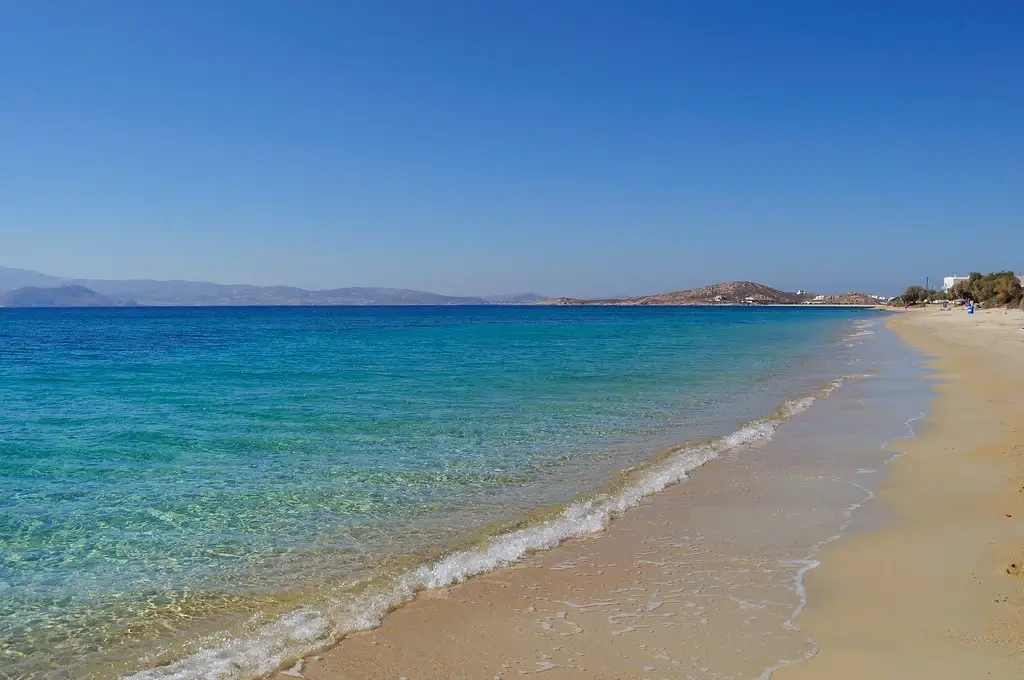
Naxos
Naxos, a captivating island in Greece, offers kitesurfers a haven with its ideal wind conditions and crystal-clear waters. The island’s consistent Meltemi wind provides a thrilling experience for kitesurfing enthusiasts of all levels.
Additionally, kitesurfers can enjoy the picturesque beaches and stunning landscapes that make Naxos a must-visit destination for water sports lovers.
Wind conditions
Naxos is known for its favorable wind conditions, attracting windsurfers and kiteboarders from around the world. While specific wind conditions can vary throughout the year, Naxos generally experiences consistent wind patterns that make it an ideal destination for wind-based water sports. Here’s a general overview of the yearly average wind conditions at Naxos:
Spring (March to May):
- During spring, Naxos typically experiences moderate to strong winds, with average speeds ranging from 15 to 25 knots.
- The prevailing winds during this season are often from the north or northeast, providing excellent conditions for windsurfing and kiteboarding enthusiasts.
Summer (June to August):
- Summer brings relatively lighter winds to Naxos compared to other seasons, with average speeds ranging from 10 to 20 knots.
- While the winds may be lighter, they are still consistent enough to support windsurfing and kiteboarding activities, particularly in the afternoons when thermal winds pick up.
Autumn (September to November):
- Autumn marks the return of stronger winds to Naxos, with average speeds ranging from 15 to 30 knots.
- The prevailing winds shift to the north or northwest, providing ideal conditions for windsurfing and kiteboarding enthusiasts to enjoy challenging yet thrilling sessions on the water.Winter (December to February):
- Winter months at Naxos can experience variable wind conditions, with average speeds ranging from 10 to 25 knots.
- While winter may bring occasional lulls in wind activity, there are still opportunities for windsurfing and kiteboarding enthusiasts to enjoy sessions on the water, particularly during periods of strong frontal systems.
It’s important to note that these are general trends, and actual wind conditions can vary based on weather patterns, local geography, and other factors.
Water conditions
Naxos, Greece, offers diverse water conditions that cater to various water sports and recreational activities. Here’s an overview of the water conditions at Naxos:
Waves:
- The wave conditions at Naxos vary depending on the location and prevailing weather conditions.
- The island’s coastline features a mix of beaches with calm waters suitable for swimming and water sports beginners, as well as areas with more significant waves, ideal for experienced surfers and windsurfers.
- Beaches on the western side of the island, such as Agios Prokopios and Plaka, tend to have larger waves and stronger winds, making them popular spots for windsurfing and kiteboarding.
- On the eastern side of the island, beaches like Agia Anna and Agios Georgios typically offer calmer waters, perfect for swimming and relaxation.
Tides:
- Naxos experiences semi-diurnal tides, meaning there are typically two high tides and two low tides each day.
- The tidal range in Naxos is relatively small, with variations of around 0.5 to 1 meter (1.6 to 3.3 feet) between high and low tide.
- While tidal currents may not be as strong as in some other coastal areas, it’s essential to be mindful of tide changes, especially when swimming or engaging in water activities.
Water Temperature:
- The water temperature in Naxos varies throughout the year, with warmer temperatures during the summer months and cooler temperatures during the winter.
- During the peak summer season, which typically spans from June to August, water temperatures range from around 22 to 27 degrees Celsius (72 to 81 degrees Fahrenheit), providing comfortable conditions for swimming and water sports.
- In the winter months, water temperatures can drop to around 16 to 18 degrees Celsius (61 to 64 degrees Fahrenheit), which may still be suitable for activities like snorkeling but may require wetsuits for extended periods in the water.
Overall, Naxos offers a wide range of water conditions to suit different preferences and activities, from calm swimming spots to challenging surf breaks.
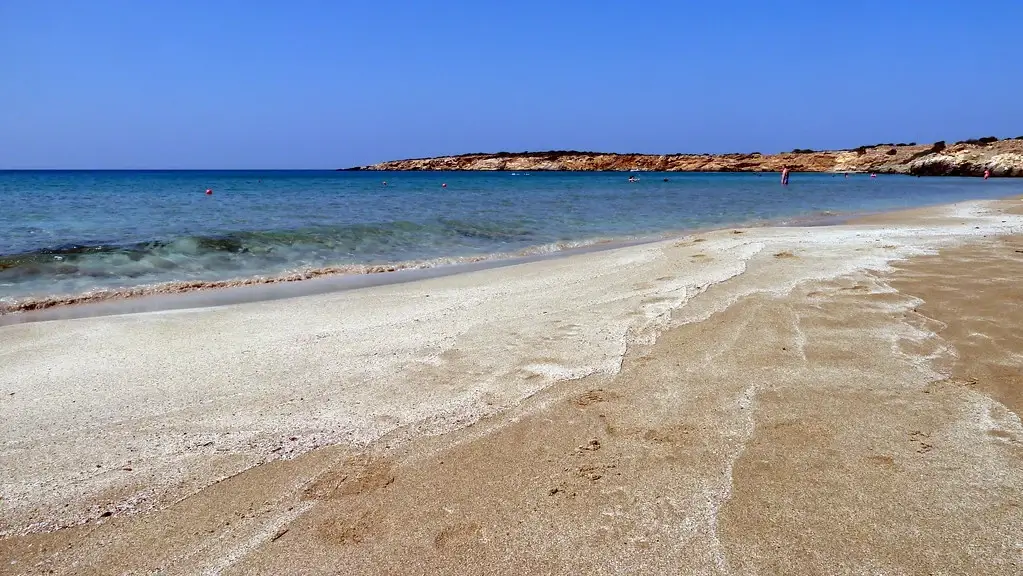
Paros
Nestled in the heart of the Cyclades, Paros boasts consistent wind conditions that allure kitesurfers from around the globe.
The island’s crystal-clear waters provide the perfect playground for both beginners and seasoned riders looking to hone their skills.
With its idyllic setting and reliable elements, Paros stands out as a premier kitesurfing destination in Greece.
Wind conditions
Paros is renowned for its consistent and favorable wind conditions, making it a popular destination for wind-based water sports such as windsurfing and kiteboarding. While specific wind conditions can vary throughout the year, Paros generally experiences reliable wind patterns that attract enthusiasts from around the world. Here’s a general overview of the yearly average wind conditions at Paros:
Spring (March to May):
- During spring, Paros typically experiences moderate to strong winds, with average speeds ranging from 15 to 25 knots.
- The prevailing winds during this season are often from the north or northwest, providing excellent conditions for windsurfing and kiteboarding enthusiasts.
Summer (June to August):
- Summer brings relatively lighter winds to Paros compared to other seasons, with average speeds ranging from 10 to 20 knots.
- While the winds may be lighter, they are still consistent enough to support windsurfing and kiteboarding activities, particularly in the afternoons when thermal winds pick up.
Autumn (September to November):
- Autumn marks the return of stronger winds to Paros, with average speeds ranging from 15 to 30 knots.
- The prevailing winds shift to the north or northeast, providing ideal conditions for windsurfing and kiteboarding enthusiasts to enjoy challenging yet thrilling sessions on the water.
Winter (December to February):
- Winter months at Paros can experience variable wind conditions, with average speeds ranging from 10 to 25 knots.
- While winter may bring occasional lulls in wind activity, there are still opportunities for windsurfing and kiteboarding enthusiasts to enjoy sessions on the water, particularly during periods of strong frontal systems.
It’s important to note that these are general trends, and actual wind conditions can vary based on weather patterns, local geography, and other factors.
Water conditions
The water conditions at Paros are conducive to a variety of water activities, including swimming, snorkeling, windsurfing, and kiteboarding. Here’s an overview of the water conditions at Paros:
Waves:
- Paros offers diverse wave conditions, ranging from calm waters to moderate swells depending on the location and prevailing weather conditions.
- The island’s coastline features a mix of beaches with different wave characteristics, making it suitable for various water sports and recreational activities.
- Beaches on the northern and western sides of the island, such as Golden Beach and Pounda Beach, are known for their stronger winds and waves, making them popular spots for windsurfing and kiteboarding.
- On the southern and eastern sides of the island, beaches like Santa Maria and Kolymbithres tend to have calmer waters, ideal for swimming and relaxation.
Tides:
- Paros experiences semi-diurnal tides, meaning there are typically two high tides and two low tides each day.
- The tidal range in Paros is relatively small, with variations of around 0.5 to 1 meter (1.6 to 3.3 feet) between high and low tide.
- While tidal currents may not be as pronounced as in some other coastal areas, it’s still essential to be aware of tide changes, especially when swimming or engaging in water activities.
Water Temperature:
- The water temperature in Paros varies throughout the year, with warmer temperatures during the summer months and cooler temperatures during the winter.
- During the peak summer season, which typically spans from June to August, water temperatures range from around 22 to 27 degrees Celsius (72 to 81 degrees Fahrenheit), providing comfortable conditions for swimming and water sports.
- In the winter months, water temperatures can drop to around 16 to 18 degrees Celsius (61 to 64 degrees Fahrenheit), which may still be suitable for activities like snorkeling but may require wetsuits for extended periods in the water.
Overall, Paros offers a range of water conditions to suit different preferences and activities, from challenging waves for windsurfers and kiteboarders to tranquil waters for swimmers and beachgoers.
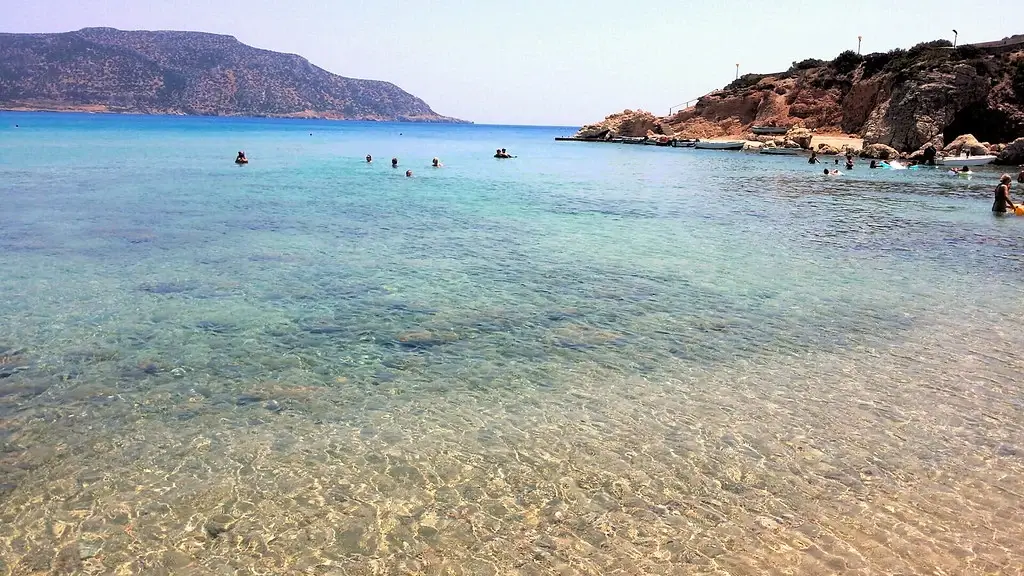
Karpathos
Karpathos, an enchanting island in Greece, is renowned for its exceptional kitesurfing conditions. With consistent strong winds and crystal-clear waters, Karpathos offers an ideal setting for kitesurfing enthusiasts to enjoy their sport.
The combination of favorable wind conditions and pristine water makes Karpathos a must-visit destination for kitesurfers seeking thrilling experiences on the waves.
Wind conditions
Nestled in the southeastern Aegean Sea, Karpathos boasts exceptional wind conditions that make it a premier kitesurfing destination.
- Wind patterns: Karpathos experiences consistent Meltemi winds during the summer months, providing ideal conditions for kitesurfing.
- Ideal wind speeds: Ranging from 16 to 25 knots, requiring kite sizes between 9m and 12m for most riders.
- Best times to kitesurf: The peak season from June to September offers the most reliable wind conditions, with local weather forecasts easily accessible.
- Wind direction: Predominantly blowing from the north, allowing for various kite control techniques like upwind riding and jumps.
- Wind consistency: The island’s reliable winds ensure a fantastic kitesurfing experience, complemented by moderate wave conditions.
Water conditions
Karpathos offers diverse water conditions that cater to various water activities, from swimming and snorkeling to windsurfing and kiteboarding. Here’s an overview of the water conditions at Karpathos:
Waves:
- Karpathos boasts a varied coastline with a mix of beaches, each offering different wave conditions.
- The northern and eastern parts of the island tend to have larger waves and stronger winds, making them popular spots for windsurfing and kiteboarding.
- Beaches such as Afiartis and Gun Bay are known for their reliable wind conditions and challenging wave breaks, attracting experienced windsurfers and kiteboarders.
- In contrast, the southern and western parts of the island feature calmer waters and gentler waves, suitable for swimming, snorkeling, and family-friendly beach activities.
Tides:
- Karpathos experiences semi-diurnal tides, meaning there are typically two high tides and two low tides each day.
- The tidal range in Karpathos is relatively small, with variations of around 0.5 to 1 meter (1.6 to 3.3 feet) between high and low tide.
- While tidal currents may not be as strong as in some other coastal areas, it’s essential to be mindful of tide changes, especially when swimming or engaging in water activities.
Water Temperature:
- The water temperature in Karpathos varies throughout the year, with warmer temperatures during the summer months and cooler temperatures during the winter.
- During the peak summer season, which typically spans from June to August, water temperatures range from around 22 to 27 degrees Celsius (72 to 81 degrees Fahrenheit), providing comfortable conditions for swimming and water sports.
- In the winter months, water temperatures can drop to around 16 to 18 degrees Celsius (61 to 64 degrees Fahrenheit), which may still be suitable for activities like snorkeling but may require wetsuits for extended periods in the water.
Overall, Karpathos offers a range of water conditions to suit different preferences and activities, from challenging waves for experienced water sports enthusiasts to calm waters for leisurely beachgoers.
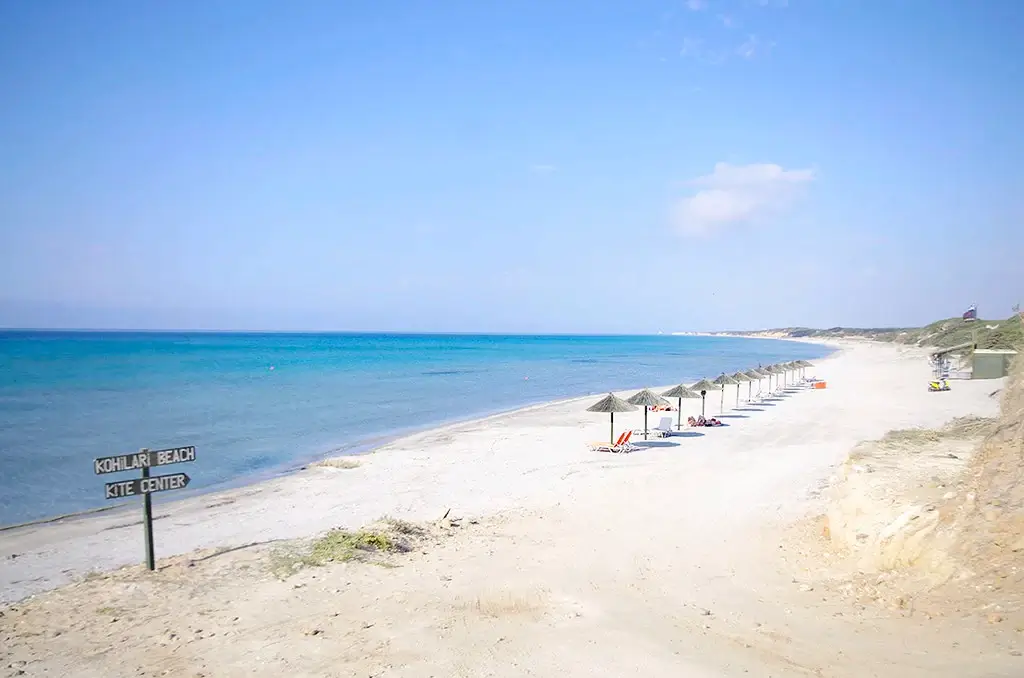
Kos
Kos, a picturesque Greek island, is renowned for its ideal kitesurfing conditions. The island boasts consistent wind conditions, making it a paradise for kitesurfers seeking thrilling sessions.
Additionally, the crystal-clear waters surrounding Kos provide the perfect backdrop for both beginners and experienced kitesurfers to enjoy their sport.
Wind conditions
Known for its consistently strong winds, Kos provides ideal conditions for kitesurfing enthusiasts seeking thrilling experiences on the water.
- Wind patterns, safety: Kos experiences reliable Meltemi winds during the summer months, creating optimal kitesurfing conditions but requiring kitesurfers to adhere to safety guidelines due to the wind’s strength.
- Ideal wind speeds, gear: With wind speeds ranging from 16 to 28 knots, kitesurfers often opt for smaller kite sizes and boards suitable for choppy waters.
- Wind direction, technique: The prevailing northwesterly winds make Kos a great spot for riders practicing upwind and downwind techniques.
- Wind consistency, challenges: While the wind is generally consistent, beginners may find the strong gusts a bit challenging to handle initially.
Water conditions
Kos offers a diverse range of water conditions that cater to various water activities, from swimming and snorkeling to windsurfing and kiteboarding. Here’s an overview of the water conditions at Kos:
Waves:
- Kos features a varied coastline with beaches offering different wave conditions.
- The northern and eastern parts of the island tend to have larger waves and stronger winds, making them ideal spots for windsurfing and kiteboarding.
- Beaches such as Mastichari and Marmari are known for their reliable wind conditions and challenging wave breaks, attracting experienced water sports enthusiasts.
- In contrast, the southern and western parts of the island often have calmer waters and gentler waves, suitable for swimming, snorkeling, and family-friendly beach activities.
Tides:
- Kos experiences semi-diurnal tides, meaning there are typically two high tides and two low tides each day.
- The tidal range in Kos is relatively small, with variations of around 0.5 to 1 meter (1.6 to 3.3 feet) between high and low tide.
- While tidal currents may not be as pronounced as in some other coastal areas, it’s essential to be aware of tide changes, especially when swimming or engaging in water activities.
Water Temperature:
- The water temperature in Kos varies throughout the year, with warmer temperatures during the summer months and cooler temperatures during the winter.
- During the peak summer season, which typically spans from June to August, water temperatures range from around 22 to 27 degrees Celsius (72 to 81 degrees Fahrenheit), providing comfortable conditions for swimming and water sports.
- In the winter months, water temperatures can drop to around 16 to 18 degrees Celsius (61 to 64 degrees Fahrenheit), which may still be suitable for activities like snorkeling but may require wetsuits for extended periods in the water.
Overall, Kos offers a range of water conditions to suit different preferences and activities, from challenging waves for experienced water sports enthusiasts to calm waters for leisurely beachgoers.
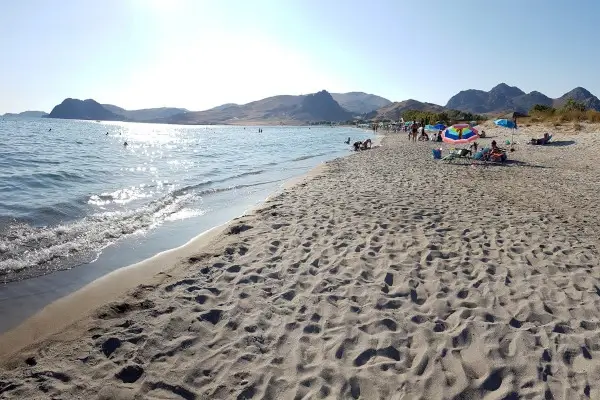
Lemnos (Limnos)
Lemnos (Limnos), an island in Greece, boasts excellent wind conditions that make it a sought-after destination for kitesurfing enthusiasts. Its waters offer varying conditions, with spots suitable for both beginners and more experienced riders.
This island provides a unique kitesurfing experience against the backdrop of its picturesque landscapes.
Wind conditions
Nestled in the Aegean Sea, Lemnos boasts invigorating wind conditions that beckon kitesurfing enthusiasts from around the globe.
- Wind patterns, safety: The consistent Meltemi wind provides excellent kitesurfing conditions, but beginners should be cautious of its strength.
- Ideal season: The best time to visit is from May to September.
- Wind speed, progression: Wind speeds range from 15 to 25 knots, ideal for both beginners honing their skills and advanced riders looking to progress.
- Weather conditions, community: Aside from great wind, Lemnos offers a friendly kitesurfing community and pleasant Mediterranean weather, enhancing the overall experience.
Water conditions
With crystal-clear waters and varying depths, Lemnos (Limnos) presents kitesurfers with a dynamic aquatic playground to explore and enjoy.
The wave height in Lemnos is generally moderate, providing ideal conditions for both beginners and experienced kitesurfers. The water temperature in this region is pleasantly warm during the kitesurfing season, ranging from 20°C to 25°C, ensuring comfortable sessions on the water.
Tide levels in Lemnos vary throughout the day, offering kitesurfers a mix of high and low tide experiences. Understanding the current direction is crucial for navigating the waters effectively and maximizing kitesurfing sessions in Lemnos.
